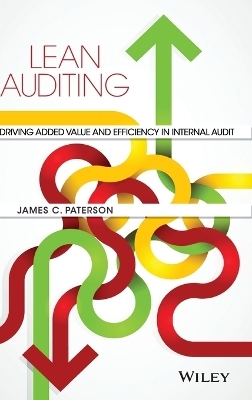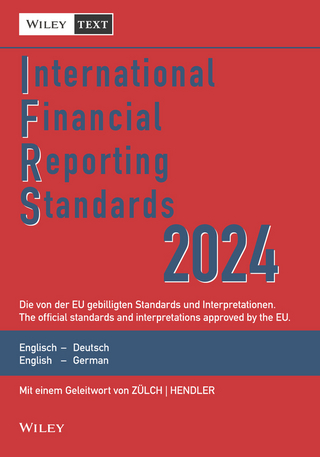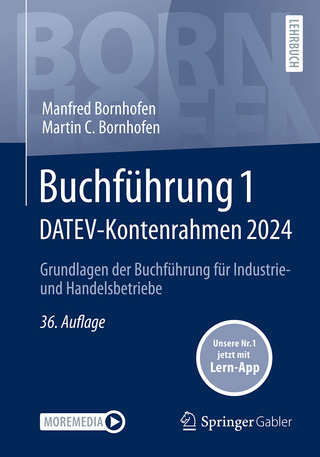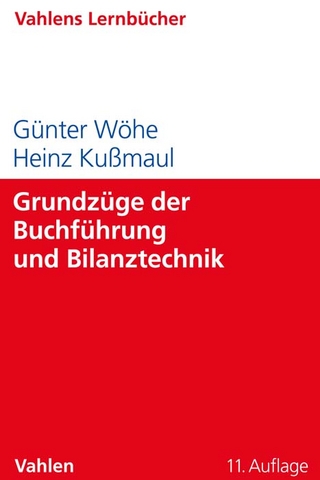
Lean Auditing
John Wiley & Sons Inc (Verlag)
978-1-118-89688-4 (ISBN)
"How can you argue with the core principles of Lean, that you focus on what provides value to your customer and eliminate work that is not necessary (muda)? Internal auditors need to understand not only who their primary customers are, but what is valuable to them - which in most cases is assurance that the risks that matter to the achievement of objectives are properly managed. We need to communicate what they need to know and not what we want to say. This incessant focus on the customer and the efficient production of a valued product should extend to every internal audit team. How else can we ensure that we optimize the use of our limited resources to address the dynamic business and risk environment within which our organizations operate?"
Norman Marks, GRC Thought Leader
Using lean techniques to enhance value add and reduce waste in internal auditing
Lean Auditing is a practical guide to maximising value and efficiency in internal audit through the application of lean techniques. It is an ideal book for anyone interested in understanding what progressive, value adding audit can be like. It is also ideal for anyone wondering whether audit activities can be streamlined or better co-ordinated with other activities. The book contains practical advise from the author's experience as CAE of AstraZeneca PLC; from his work as a consultant specializing in this field; as well as insights from leading CAEs in the UK, US and elsewhere. In addition, there are important insights from thought leaders such as Richard Chambers (IIA US) and Norman Marks (GRC thought leader) and Chris Baker (Technical Manager of the IIA UK).
Increasing pressure on resources is driving a need for greater efficiency in all areas of business, and Internal Audit is no exception. Lean techniques can help streamline the workflow, but having only recently been applied to IA, lack the guidance available for other techniques. Lean Auditing fills this need by combining expert instruction and actionable advice that helps Internal Auditors:
Benchmark their efficiency against lean ways of working
Understand warning signs of waste and lower added value
Understanding practical ways of working that improve added value and reduce waste
Gain confidence about progressive ways of working in internal audit
Understand how improved ways of working in audit can positively impact the culture of the wider organization
One of the keys to the lean audit is finding out exactly what the stakeholder wants, and eliminating everything else. Scaling back certain operations can delineate audit from advisory, and in the process, dramatically improve crucial outcomes. To this end, Lean Auditing is the key to IA efficiency.
JAMES C. PATERSON, is Director of Risk & Assurance Insights, Ltd, (www.RiskAI.co.uk) and provides consulting, coaching and training to clients in the public and private sectors in the UK, Europe and further afield. This allows him to combine his interests in risk assurance and internal audit alongside his passion for leadership and organizational development. Paterson enjoyed a successful corporate career as the Head of the Group Financial Reporting Department of AstraZeneca PLC. After attending the IMPM programme and obtaining a Masters degree in Management from McGill University in Canada he became the Director or Leadership Development programmes for AstraZeneca PLC working on leadership development and culture change issues. After that he was appointed as the VP and Chief Audit Executive of AstraZeneca PLC from 2002 until the end of 2009. This was where he first developed his interest in lean ways of working, which eventually led to the writing of Lean Auditing. James also has a BSc (Hons) in Mathematics & Philosophy from the University of Manchester in the UK and is PIIA qualified.
Foreword ix
Introduction xi
Part 1 Lean And Lean Auditing In Overview 1
1 Lean Auditing at AstraZeneca 3
2 A Brief History of Lean, Notable Principles and the Approach Taken by this Book 5
3 Key Lean Tools & Techniques 11
4 The Development of Lean Auditing and Its Benefits 19
5 The Wider Benefits of a Lean Audit Approach – and How to Use This Book 23
Part 2 Looking At Internal Audit Planning And Assignment Delivery 31
6 Who Are the Customers of Internal Audit? 33
7 What Really Adds Value – And What Doesn’t 45
8 The Importance of Role Clarity in Assurance and the Insights Lean Can Offer 59
9 The Audit Plan: Taking a Value Approach 77
10 Factoring in Risk Assurance in the Audit Plan 95
11 Considering the Allocation of Resources to Optimize Value Add 107
12 Assignments – Types, Scheduling and Resourcing 121
13 Using Assignment Scoping and Planning to Drive Added Value 133
14 Assignment Delivery – Managing What Really Goes On 149
15 Using Communication and Quality Standards to Maximize the Added Value from Assignments 175
16 Assignment Follow-Up and Follow On 205
Part 3 Looking At Key Underpinning Capabilities, Processes And Ways Of Working 213
17 Measuring Performance and Driving Improvements in Audit Ways of Working 215
18 Using Lean Audit Principles to Underpin Cultural Change in the Wider Organization 227
19 Leading the Audit Function 241
20 The Audit Function: Selection, Training & Development and Ways of Working 257
Part 4 FINAL REFLECTIONS 279
21 Further Thoughts about Where and How to Start the Journey Towards Lean Progressive Auditing 281
22 A Brief Look into the Future 285
Other Recommended Reading 289
Appendix – Illustrative Kano Analysis Regarding Internal Audit 291
Closing Dedication & Thanks 295
Index 297
| Verlagsort | New York |
|---|---|
| Sprache | englisch |
| Maße | 160 x 236 mm |
| Gewicht | 603 g |
| Themenwelt | Wirtschaft ► Betriebswirtschaft / Management ► Rechnungswesen / Bilanzen |
| ISBN-10 | 1-118-89688-2 / 1118896882 |
| ISBN-13 | 978-1-118-89688-4 / 9781118896884 |
| Zustand | Neuware |
| Haben Sie eine Frage zum Produkt? |
aus dem Bereich


